10+ SAMPLE Non Profit Organization Budget
-
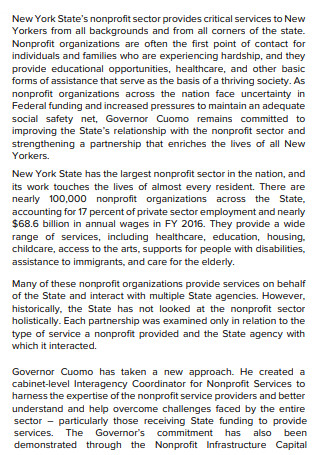
State Non Profit Organization Budget
download now -
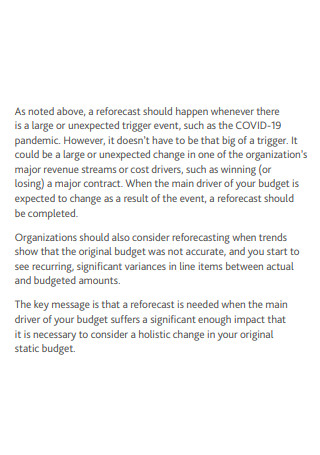
Standard Non Profit Organization Budget
download now -

Guidlines for Non Profit Organization Budget
download now -
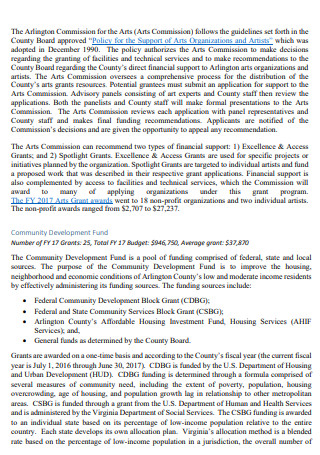
Sample Non Profit Organization Budget
download now -
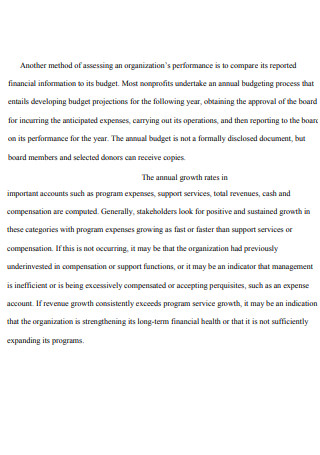
Non Profit Organization Financial Budget
download now -
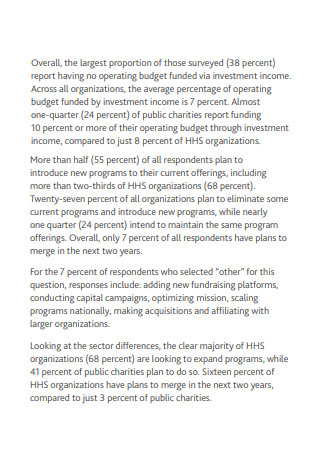
Simple Non Profit Organization Budget
download now -

Non Profit Organization Startup Budget
download now -
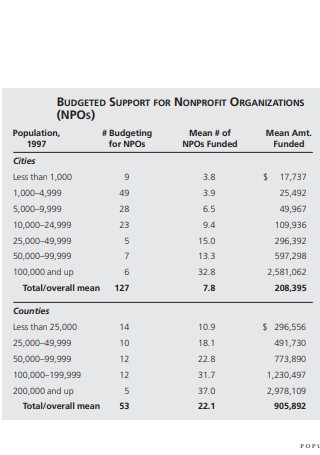
Non Profit Organization Budget
download now -
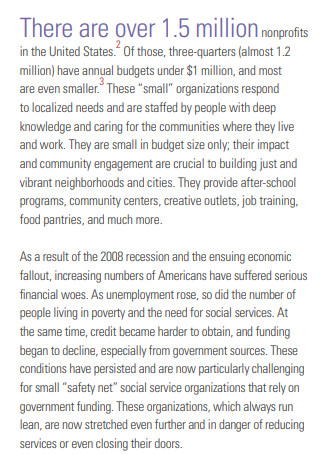
Non Profit Organization Final Budget
download now -
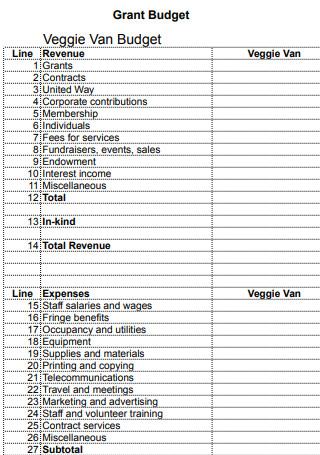
Non Profit Organization Grant Budget
download now -
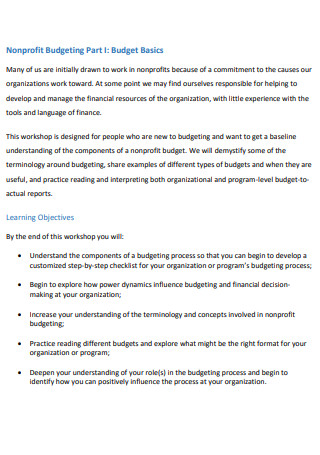
Non Profit Organization Basic Budget
download now
FREE Non Profit Organization Budget s to Download
10+ SAMPLE Non Profit Organization Budget
What Is a Non Profit Organization?
How to Start a Non Profit Organization?
Creating a Non Profit Organization Budget
FAQs
How important is budget planning in a non profit organization?
What are some types of expenses incurred by a non profit organization?
Are there any disadvantages to a non profit organization?
What Is a Non Profit Organization?
The US Chamber of Commerce defines non profit organizations as, “one that qualifies for tax-exempt status by the IRS because its mission and purpose are to further a social cause and provide a public benefit. Non Profit organizations include hospitals, universities, national charities and foundations.” A non profit organization is driven by its values of accountability, transparency and trustworthiness. Since the organization relies on donations and other types of fundraising action plan activities to fund its operations, it should be transparent on how it handles its finances. Funds that they raise goes directly to their operations since, after all, the organization is not in the business to make profit. Their operation should be in the form of a service or distribution of goods, or can be a bit of both, and at all times they are required to disclose their financial statements to the public for the benefit of their funders.
Since non profit organizations are exempted from taxes, funders who chose to donate are qualified to some tax returns as well. The organization thrives on their mission to help better the overall wellbeing of others. The coverage of their work could be on a local, national, or even on an international level. Non profit organizations cover a broad range of services. They could be either educational, human rights, poverty, religious, scientific, environmental, sports, social welfare, labor, animal welfare, and many others. If you’re following these kinds of organizations, you’d probably be familiar with the non profit groups such as Bill and Melinda Gates Foundation, African Wildlife Foundation, Breast Cancer Research Foundation, Action Against Hunger, and so many others out there that are all over news ads and social media that asks for a call to action to donate and fund their mission.
How to Start a Non Profit Organization?
Seeing the results of these cause oriented groups makes you feel inspired to start your own non profit. You also wanted to make a difference by helping your local community. You wanted your actions to be legitimate, and you also wanted it in a way that people can help through either by donating funds or volunteering their time to serve. Here are some of the steps on how you can start your own non profit organization.
Creating a Non Profit Organization Budget
Now that you have started forming your non profit organization, it’s time to tackle the budget planning part that runs the whole operation. It is important to remember when doing the financial planning for a non profit organization that the availability of funds should be able to sustain the life of the organization. The whole budget planning process is usually done by the board of directors, or by the board members who are assigned as the finance committee. Nevertheless, here are some of the important key steps when creating a budget for a non profit organization.
Step 1: Create a Timetable
Before you dig in deep into the budget, create a chart or a table that will serve as your workflow guide in mapping out the budget. Start with a timetable. The timetable should be in the form of a schedule as to when the board of directors would meet and approve on every deliverable program. Set specific dates and times, and make sure that the schedules allotted will give the board sufficient time to review, discuss, and vote on the deliverables.
Step 2: Plot the Deliverables
Deliverables are the identified programs and services to achieve the organization’s goals. These include activities for fundraising and for the actual programs implementations. Identify what are the activities the operations team needs to perform in order to raise the money for the organization and how the organization will carry out its programs and services. The deliverables should be both measurable in terms of success and should also be achievable.
Step 3: Draft the Budget Proposal
The budget proposal should contain the projected amount of money to be raised for the non profit organization’s services or programs. It should indicate the income and expenses. If the funds will be raised through donations and sponsorships, be accurate when listing down the names of the donors or sponsors. This is an important detail since you wanted to show transparency within the organization. Write down their names and the corresponding amount that they’re expected to donate or have pledged to donate. In your table, create three columns: one for the source of revenue, one for the budget, and one for the estimated expenses. On the revenue column, list down the expected sources of your funds, or the fundraising activities. You can group them as individual donations, sponsorships, events, grants, et cetera. The specific names for each of these can be written on a separate sheet. Next to your revenue column is the budget list. This is the expected budget to be raised from the sources of revenue column. After the budget column comes your expense column list. List down the projected or estimated expenses. Identify the fixed expenses such as utilities (rental, water, electricity, et cetera), office supplies, transportation, meals, and all other expenses that are projected to incur during the non profit’s implementation of its programs and services.
Step 4: Reviewing the Budget Proposal
After creating the draft of the budget proposal, the finance committee needs to present to the rest of the board members or directors a copy for review and approval, since all decisions within a non profit organization are subject to the approval of the board members. The board then checks if the fundraising events are feasible and if the budget presented are realistic. They identify the advantages and disadvantages, make recommendations and adjustments, and finally, vote if the proposed budget will be implemented or not.
Step 5: Implementation and Reporting
Once approved, this is where the implementation of the budget proposal takes place. The non profit organization starts to then raise the funds as was indicated on the budget proposal. They either start collecting the pledged cash donations, creating sponsorship agreements, doing fundraising events, begin the application for a financial grant, approach sponsors, et cetera. Again, all the fund sources and the corresponding amount of money should be listed down as accurately as possible. Once the targeted budget is raised, the organization starts implementing their services and programs. It could be through charitable works such as a feeding program, providing housing and shelter, providing educational scholarships, free legal assistance to human rights victims, shelter for animals, and so on. The list is endless. After the implementation of these programs and services, itemized the actual expenses that occurred. Present them all in a report to the board members and to the public. The biggest value that a non profit organization has is its trustworthiness, and the people who financially assisted the organization would like to be kept up to date on how their financial assistance was used by the group.
FAQs
How important is budget planning in a non profit organization?
Budget planning is important since it serves as a roadmap for the non profit organization’s source of funds and expenses. It provides transparency as to how the organization will use the funds allocated or provided by the funders or donors. It also measures the viability of the organization if they’re in for long-term success or not.
What are some types of expenses incurred by a non profit organization?
Some of the expenses could be in the form of administrative or management expenses. Examples of these expenses are the rental of the building where the organization is located; the utility bills such as electricity, water, internet, et cetera; and other fixed types of expenses that are vital to the management and operation of the organization. Another type of expense is fundraising. This is the expenses incurred during fundraising activities such as the news and social media campaign tools and materials used, the venue for the events, printed materials, et cetera. Another is the services and programs expenses. These are the expenses necessary to carry out the non profit organization’s mission. These could be the housing materials used to build houses, if your non profit organization is all about providing shelter. It could be the meals purchased for a feeding program campaign, and so on and so forth.
Are there any disadvantages to a non profit organization?
One of the disadvantages of a non profit organization is the limited budget. Since a non profit organization is dependent upon donations, sponsorships and fundraising activities to run its operation, its measure of success is how long and well can the existing budget sustain the organization as a whole. Another disadvantage of running a non profit organization is the public pressure the organization will face. Transparency and trustworthiness are the major values the organization is founded upon, so the group needs to make sure that their financial statements are updated, correctly accounted for, and that their programs and services are aligned to what they have stated out in their mission as an organization. Having a good public review and approval could push the organization’s operation for a long-term basis.
The success of a non profit organization is dependent on its mission to work for a certain cause. The passion of the people driving the organization is also another contributing factor to its success. At the end of the day, as Winston Churchill said, “We make a living by what we get, but we make a life by what we give.” In this case of a non profit organization, it’s the giving back part that determines the purpose and the success for its existence. As the budget plays a vital role in the operation of a non profit organization, it is wise to have a tool in place to be able to assist you in the budget planning. Download now one of our budget planning tools for a non profit organization, and witness how your organization reaches its success through effective budget planning!
